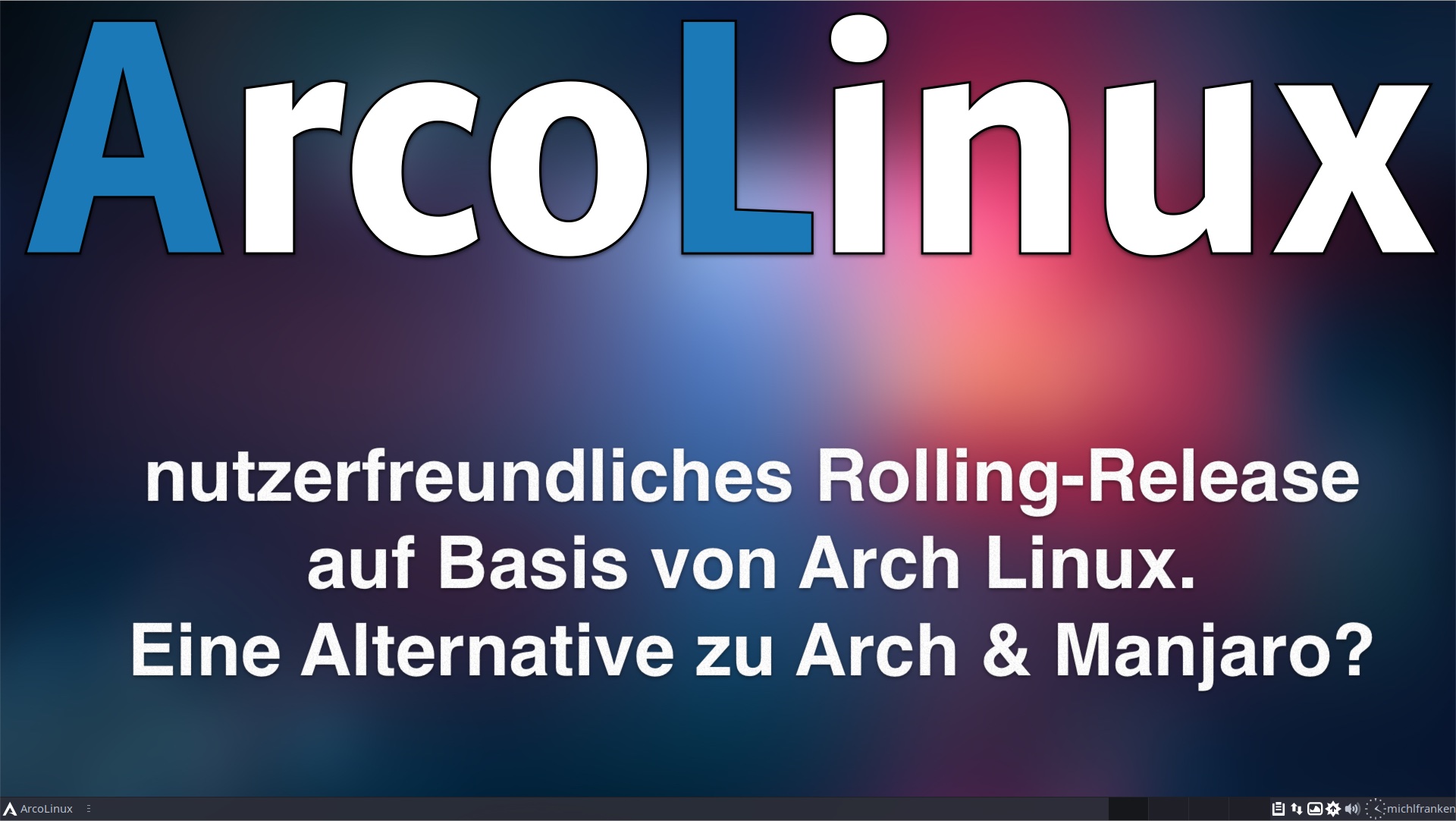

We recommend starting with the main edition, which features the Xfce, Openbox, and i3 desktop sessions. If you ever wanted to use Arch Linux on your personal computer but you find it cumbersome, you need to try ArcoLinux.

#Arcolinux install#
While the ArcoLinuxD edition lets users install the operating system with a minimal set of applications, as well as to edit and run scripts to set up the system, the ArcoLinuxB edition give them the power to build their own ArcoLinux flavor. ArcoLinuxD and ArcoLinuxBĪrcoLinux even comes in a couple of other flavors like ArcoLinuxD and ArcoLinuxB. Besides Xfce, users can choose between using the Openbox or i3 window managers, which are installed by default, as well as any other popular desktop environment for Linux distros. The Xfce desktop environment of ArcoLinux also uses in-house built components like themes, icons, Conky configurations, tweaks, and other configs. By default, ArcoLinux offers a highly customized Xfce desktop session that uses various components from Arch Linux's AUR (Arch User Repository), including apps from GitHub, Debian, Red Hat, etc. The default desktop environment of ArcoLinux is the lightweight Xfce, which is known to work very well on slower computers. Xfce is the default desktop environment, powered by AUR However, ArcoLinux is only supported on 64-bit (x86_64) hardware, just like Arch Linux. The graphical installer used by ArcoLinux is the famous Calamares, which lets you easily install the operating system on your personal computer and even gives you powerful features like full-disk encryption.
#Arcolinux Pc#
This means you don't have to install ArcoLinux on your PC to use it, but there's also an installer if you want to keep it.

One of the best things about ArcoLinux is that it features a live graphical session with a nicely customized desktop environment and all the apps you need to get started learning Linux and learning using Arch Linux. ArcoLinux's motto is "Learn, enjoy and have fun." An Arch Linux clone with style and a live session and installer
#Arcolinux how to#
The live system comes equipped with an XFCE desktop interface and a fully established software suite.ArcoLinux is an open-source and free GNU/Linux distribution based on the Arch Linux operating system and designed for those who want to learn to use Arch Linux but don't dare to install and configure it from scratch.ĪrcoLinux promises to gradually take users through the beautiful world of Arch Linux and teach them how to use the operating system with over 300 video tutorials while allowing them the freedom to change the distribution in any way they want. This is the release that’s designed to be used.

#Arcolinux full#
With Anarchy Linux, you get access to a full live system, which allows you to try the distro before installing it on your system directly. The main ArcoLinux release comes with three desktop environments, is chock full of productivity apps and is designed for the average desktop user. You have an option to either write the distro’s ISO image to a USB/CD or install it directly on a virtual machine. Anarchy Linux intends to pave the way for desktop computing and further provide you a platform to install a customized Arch-based OS. Like some of the other distros on the list, Anarchy Linux is also an open-source distro, which draws its inspirations from Arch Linux. The purpose of this half-rolling model is to let users enjoy different versions of the KDE Plasma desktop, along with other applications. It relies heavily on KDE and Qt software, with an intent to encourage users to adopt KDE/Qt for some of the other widget toolkits.Ĭhakra is a community-developed OS that follows a half-rolling release model. Chakra is another user-friendly distribution, based on Arch Linux.


 0 kommentar(er)
0 kommentar(er)
